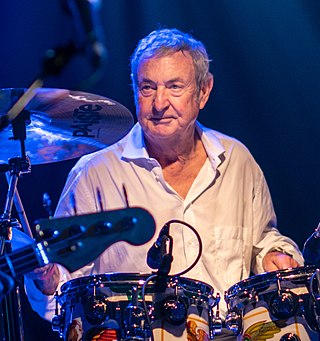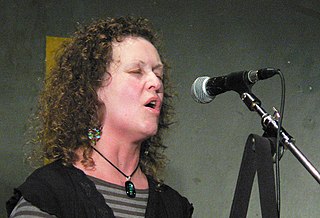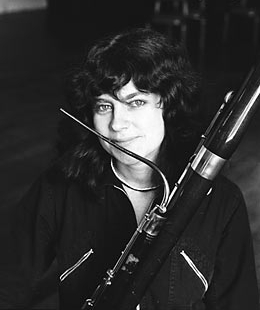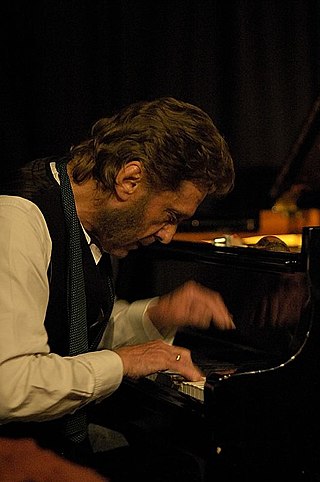
Nicholas Berkeley Mason is an English drummer and a founder member of the progressive rock band Pink Floyd. He has been the only constant member since the band's formation in 1965, and the only member to appear on every Pink Floyd album. He co-wrote Pink Floyd compositions including "Echoes", "Time", "Careful with That Axe, Eugene" and "One of These Days".

Soft Machine are an English rock band from Canterbury, Kent. The band were formed in 1966 by Mike Ratledge, Robert Wyatt, Kevin Ayers, Daevid Allen and Larry Nowlin. Soft Machine were central in the Canterbury scene; they became one of the first British psychedelic acts, and later moved into progressive and jazz rock. In 1971, Soft Machine became a purely instrumental band. Soft Machine's lineup has undergone many changes, and has included Andy Summers, Hugh Hopper, Elton Dean, John Marshall, Karl Jenkins, Roy Babbington and Allan Holdsworth. As of 2025, the current line-up consists of John Etheridge, Theo Travis, Fred Thelonious Baker and Asaf Sirkis.

Kevin Ayers was an English singer-songwriter who was active in the English psychedelic music movement. Ayers was a founding member of the psychedelic band Soft Machine in the mid-1960s, and was closely associated with the Canterbury scene. He recorded a series of albums as a solo artist and over the years worked with Brian Eno, Syd Barrett, Bridget St John, John Cale, Elton John, Robert Wyatt, Andy Summers, Mike Oldfield, Nico and Ollie Halsall, among others. After living for many years in Deià, Mallorca, he returned to the United Kingdom in the mid-1990s before moving to the south of France. His last album, The Unfairground, was released in 2007. The British rock journalist Nick Kent wrote: "Kevin Ayers and Syd Barrett were the two most important people in British pop music. Everything that came after came from them."

Robert Wyatt is an English retired musician. A founding member of the influential Canterbury scene bands Soft Machine and Matching Mole, he was initially a kit drummer and singer before becoming paraplegic following an accidental fall from a window in 1973, which led him to abandon band work, explore other instruments, and begin a 40-year solo career.

Hugh Colin Hopper was a British progressive rock and jazz fusion bass guitarist. He was a prominent member of the Canterbury scene, as a member of Soft Machine and other bands.

June 1, 1974 is a live album of songs performed at the Rainbow Theatre in London on the titular date. The album is officially attributed to all principal performers Kevin Ayers, John Cale, Brian Eno and Nico, although other well-known musicians, including Mike Oldfield, Robert Wyatt, and Ollie Halsall, also contributed to the concert. The record has often been referred to as the "A.C.N.E." album, for the initials of Ayers, Cale, Nico, and Eno.
Mongezi Feza was a South African jazz trumpeter and flautist.

Third is a live and studio album by the English rock band Soft Machine, released as their third overall in June 1970 by CBS Records. It is a double album with a single composition on each of the four sides, and was the first of two albums recorded with a four-piece line-up of keyboardist Mike Ratledge, drummer and vocalist Robert Wyatt, saxophonist Elton Dean, and bass guitarist Hugh Hopper. Third marks a shift in the group's sound from their psychedelic origins towards jazz rock and electronic music.

Julie Driscoll Tippett is an English singer and actress, known for her work with Brian Auger and her husband, Keith Tippett.

Lindsay Cooper was an English bassoon and oboe player and composer. Best known for her work with the band Henry Cow, she was also a member of Comus, National Health, News from Babel and David Thomas and the Pedestrians. She collaborated with a number of musicians, including Chris Cutler and Sally Potter, and co-founded the Feminist Improvising Group. She wrote scores for film and TV and a song cycle Oh Moscow which was performed live around the world in 1987. She also recorded a number of solo albums, including Rags (1980), The Gold Diggers (1983), and Music For Other Occasions (1986).

The Wilde Flowers were an English psychedelic rock band from Canterbury, Kent. Formed in 1964, the group originally featured lead vocalist Kevin Ayers, lead guitarist and co-lead vocalist Brian Hopper, rhythm guitarist and vocalist Richard Sinclair, bassist Hugh Hopper and drummer Robert Wyatt. Despite not releasing any material during their brief three-year tenure, the band are generally considered to be the originators of the Canterbury scene. After their breakup in 1969, the group's members went on to form numerous key bands within the scene, including Soft Machine, Caravan and Camel.

Keith Graham Tippetts, known professionally as Keith Tippett, was a British jazz pianist and composer. According to AllMusic, Tippett's career "...spanned jazz-rock, progressive rock, improvised and contemporary music, as well as modern jazz for more than half-a-century". He held "an unparallelled place in British contemporary music," and was known for "his unique approach to improvisation". Tippett appeared and recorded in many settings, including a duet with Stan Tracey, duets with his wife Julie Tippetts, solo performances, and as a bandleader.

Septober Energy is the only album of the jazz/progressive rock big band Centipede. Produced by Robert Fripp under the musical direction of Keith Tippett, it was originally released 1971 in the UK as a double LP, and 1974 in the US with a different cover. The album was recorded at Wessex Studios, London during three days in June 1971. The album is a four-part suite consisting of four tracks of about 20 minutes each.

Centipede were an English jazz/progressive rock/big band with more than 50 members, organized and led by the British free jazz pianist Keith Tippett. Formed in 1970, it brought together much of a generation of young British jazz and rock musicians from a number of bands, including Soft Machine, King Crimson, Nucleus and Blossom Toes.

Rock Bottom is the second solo album by former Soft Machine drummer Robert Wyatt. It was released on 26 July 1974 by Virgin Records. The album was produced by Pink Floyd's drummer Nick Mason, and was recorded following a 1973 accident which left Wyatt a paraplegic. He enlisted musicians including Ivor Cutler, Hugh Hopper, Richard Sinclair, Laurie Allan, Mike Oldfield and Fred Frith in the recording.

Ruth Is Stranger Than Richard is the third solo album by Robert Wyatt.

Michael Roland Ratledge was a British musician. A part of the Canterbury scene, he was a founding member of Soft Machine. He was the last founding member to leave the group, doing so in 1976. He died on 5 February 2025.
The Blue Notes were a South African jazz sextet, whose definitive line-up featured Chris McGregor on piano, Mongezi Feza on trumpet, Dudu Pukwana on alto saxophone, Nikele Moyake on tenor saxophone, Johnny Dyani on bass, and Louis Moholo-Moholo on drums. After moving away from their home country in 1964, they established themselves on the European jazz circuit, where they continued to play and record through the 1970s. They are now considered one of the great free jazz bands of their era, whose music was given a unique flavour by their integration of African styles such as Kwela into the progressive jazz ideas of the time.

Roy Babbington is an English rock and jazz bassist. He became well known for being a member of the Canterbury scene progressive rock band Soft Machine.
Marcus O'Dair is an English writer, musician/manager, broadcaster and lecturer. He is most notable for his work as part of the band Grasscut, described by Clash magazine as "genuinely daring electronica artists". He is also notable for his 2015 biography of musician Robert Wyatt, a book described in the London Review of Books as "fascinating".





















